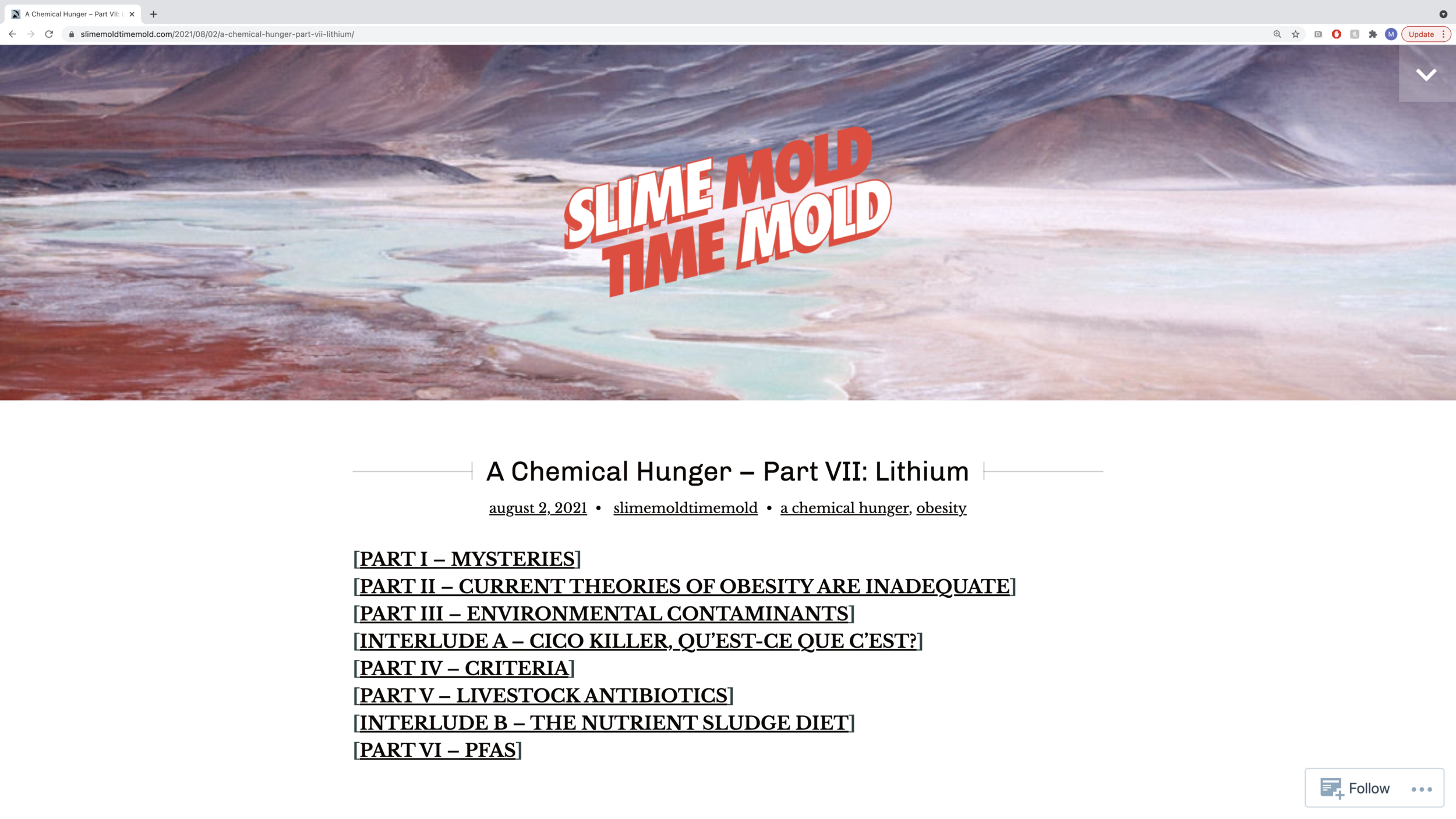Livestock Antibiotics, Lithium and PFAS as Leading Suspects for Environmental Causes of Obesity
Last week, with my post “Are Processed Food and Environmental Contaminants the Main Cause of the Rise of Obesity?” I reviewed the first three posts in the slimemoldtimemold.com series “A Chemical Hunger.” This week, I review the next four posts that detail leading suspects as environmental contaminants. The three suspects are livestock antibiotics, lithium and the per- and polyfluoroalkyl substances (PFAS) used “in stain- and water-resistant fabrics and carpeting, cleaning products, paints, and fire-fighting foams. … [and] for limited use in cookware, food packaging, and food processing equipment.” All of these arguably became much more prevalent in the environment since 1980, so that the timing is reasonably consistent with the acceleration of the rise in obesity beginning in 1980.
Livestock antibiotics are used precisely to make animals fatter, so it isn’t surprising that they might make humans fatter too. Lithium, used to treat bipolar disorder, is well known to cause people to gain weight. Scandalously, not enough experiments have been done to see what the effects of PFAS are on obesity at relevant dosages. Only very high dosages have been studied, which can make lab rodents sick enough that they lose weight. So PFAS are one step more speculative as culprits than livestock antibiotics and lithium. Also scandalously, although we know that lithium can make people fat, we don’t know how much lithium has been in our drinking water; it isn’t routinely tested for.
Getting into water supplies means none of these can be entirely avoided. However, eating less meat can probably reduce (but even going vegan would not entirely eliminate) one’s exposure to livestock antibiotics substantially. Little is known about the degree of contamination of various types of food by PFAS and lithium. For processed food, it could depend on how much was in the water used at the particular factory the food was processed at. And even for whole food, it could depend on the level of contamination of the irrigation water.
In most of my diet and health posts I emphasize strategies such as fasting and eating low on the insulin index that can help any individual who employs them. But by its nature, environmental contamination is something we need collective action on. Fortunately, small groups of people can get the ball rolling by pushing forward relevant research. For example, anyone who measures antibiotics, lithium and PFAS levels in tap water and reports them is making a real contribution. And anyone who studies the effects of PFAS on rodents at previously unstudied dosages is making a real contribution. (There are many different chemicals under the heading of livestock antibiotics and under the heading PFAS, so there is a lot to be done there.)
Note that for us to not already know which environmental contaminants are helping along the rise in obesity (and the argument is good that something is), those environmental contaminants have to somehow be in our blindspot. Besides becoming more prevalent at the time the rise in obesity was accelerating, each of these is in our blindspot: livestock antibiotics because strong commercial interests try to keep them in our blindspot, PFAS because their effects are understudied and lithium because its levels in drinking water are not routinely measured. Of course, until we get them out of our blindspot, we won’t know for sure if they or one or two of them are key culprits.
Numbers IV—VII in the “A Chemical Hunger” series give many more details of the argument. I am persuaded that we should take these hypotheses seriously.
For organized links to other posts on diet and health, see:



